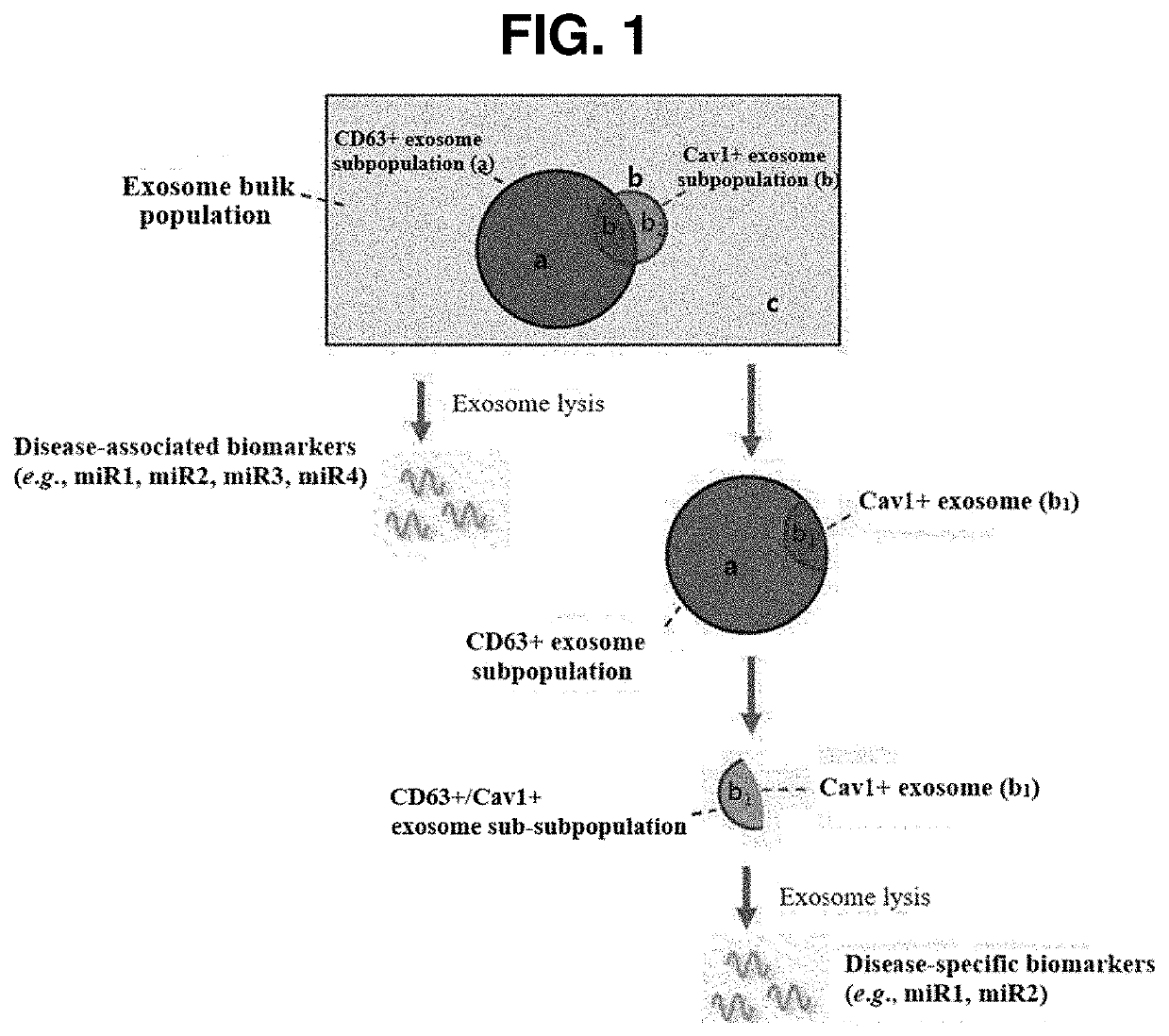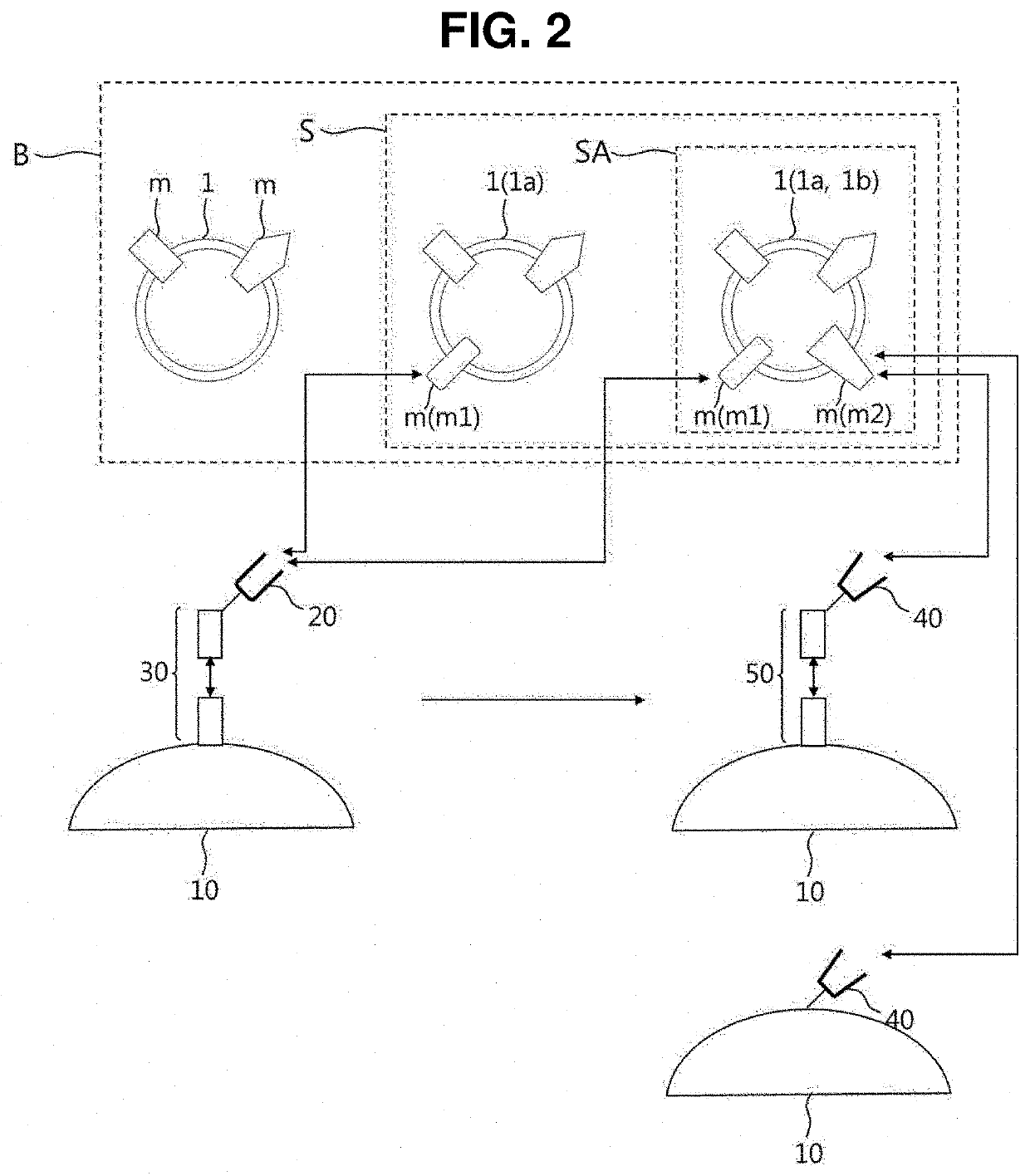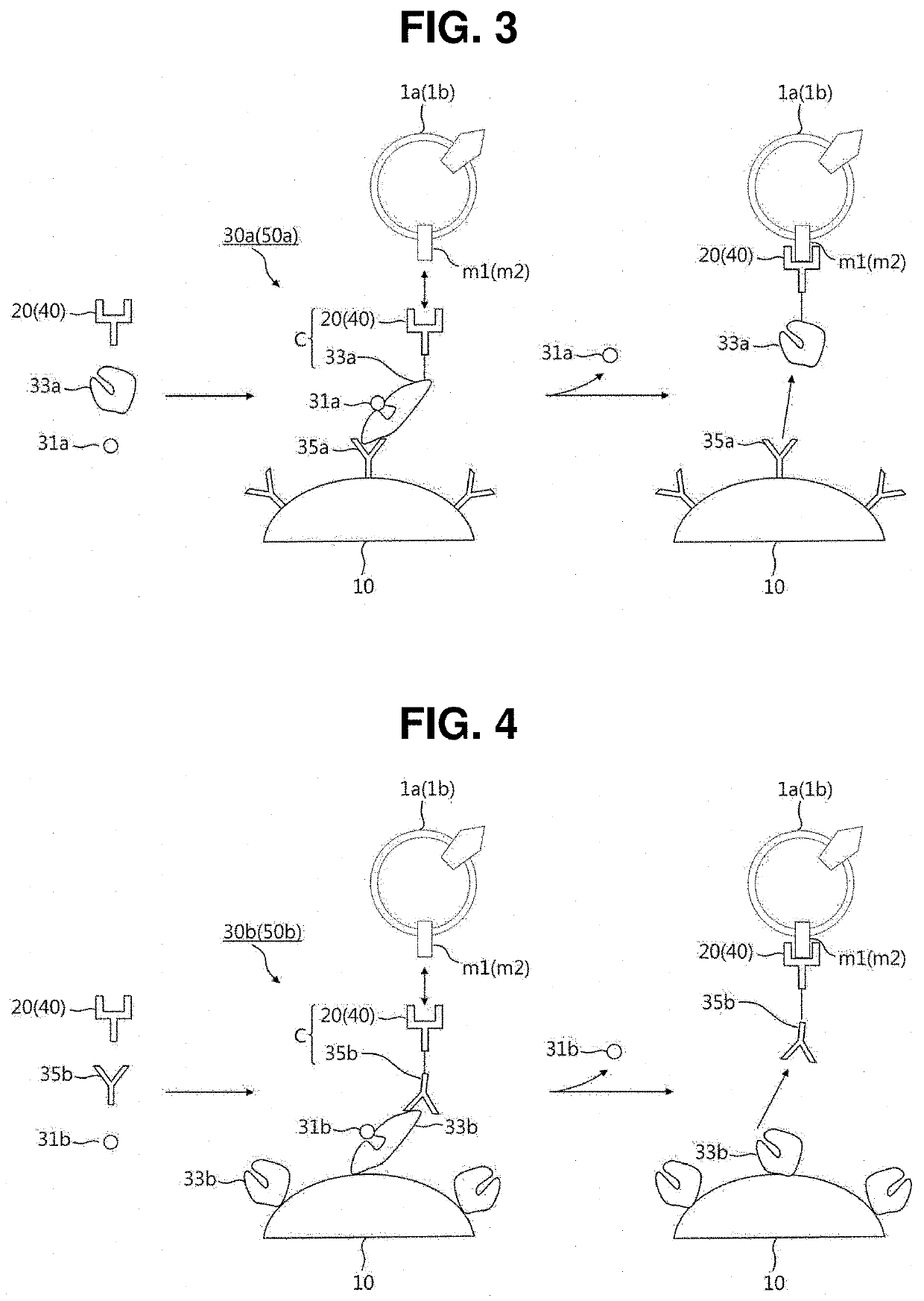Preparation device and preparation method for exosome liquid biopsy sample and method for analyzing exosome liquid biopsy sample prepared thereby
a technology for exosome liquid biopsy and preparation device, which is applied in the direction of biochemistry apparatus and processes, instruments, ict adaptation, etc., can solve the problems of only providing tissue biopsy, invasive surgical tissue sampling that poses potential risks, and difficult to fully understand the composition of the target tumor, so as to minimize the interference of non-specific exosomes, minimize the interference of specific exosome signals, and minimize the effect of noise during analysis
- Summary
- Abstract
- Description
- Claims
- Application Information
AI Technical Summary
Benefits of technology
Problems solved by technology
Method used
Image
Examples
first embodiment
[0078]As illustrated in FIG. 3, each of the reversible linkers 30a and 50a according to the present invention includes a ligand 31a, a binder 33a, and a recognition material 35a.
[0079]The ligand 31a is a material capable of detachably binding to the binder 33a and may be selected from the group consisting of sugar molecules, ions, substrates, antigens, peptides, vitamins, growth factors, hormones, and combinations thereof.
[0080]The binder 33a is a material whose conformation is changed when bound with the ligand 31a. The binder 33a may be selected from the group consisting of sugar-binding proteins, ion-binding proteins, enzymes, antibodies, avidins, aptamers, cell receptors, nanostructures, and combinations thereof. Accordingly, the binder 33a and the ligand 31a can form a binder-ligand pair such as a sugar-binding protein-sugar molecule pair, an ion-binding protein-ion pair, a biotin-avidin pair, an enzyme-substrate pair, an antigen-antibody pair, an aptamer-ligand pair, a cell r...
second embodiment
[0083]Referring to FIG. 4, each of the reversible linkers 30b and 50b according to the present invention includes a ligand 31b, a binder 33b, and a recognition material 35b.
[0084]The ligand 31b, the binder 33b, and the recognition material 35b of the reversible linker 30b or 50b according to the second embodiment correspond to the ligand 31a, the binder 33a, and the recognition material 35a of the reversible linker 30a or 50a according to the first embodiment, respectively, and only the differences will be mainly described below.
[0085]In the reversible linker 30a or 50a according to the first embodiment, the binder 33a is conjugated with the capture material 20 or 40 to form the polymer C and the recognition material 35a is immobilized on the surface of the immobilization member 10. In contrast, in the reversible linker 30b or 50b according to the second embodiment, the binder 33b is immobilized on the surface of the immobilization member 10 and the recognition material 35b is conj...
third embodiment
[0087]As illustrated in FIG. 5, each of the reversible linkers 30c and 50c according to the present invention includes a ligand 31c and a binder 33c.
[0088]The ligand 31c of the reversible linker 30c or 50c according to the third embodiment is conjugated with a first capture material 20 and / or a second capture material 40 to form a capture material-ligand conjugate C.
[0089]The binder 33c of the reversible linker 30c or 50c is immobilized on the surface of the immobilization member 10 and binds with the capture material-ligand conjugate C specifically bound to an exosome 1a or 1b, with the result that the exosome 1a or 1b is captured by the immobilization member 10. The binder 33c bound with the ligand 31c binds with another ligand 32 competing with the ligand 31c. As a result, the ligand 31c is detached and the exosome 1a or 1b can be separated and recovered from the immobilization member 10. Here, the ligand 31c may be selected from the group consisting of polyhistidine-tags (His-t...
PUM
| Property | Measurement | Unit |
|---|---|---|
| size | aaaaa | aaaaa |
| diameter | aaaaa | aaaaa |
| volume | aaaaa | aaaaa |
Abstract
Description
Claims
Application Information
 Login to View More
Login to View More - R&D
- Intellectual Property
- Life Sciences
- Materials
- Tech Scout
- Unparalleled Data Quality
- Higher Quality Content
- 60% Fewer Hallucinations
Browse by: Latest US Patents, China's latest patents, Technical Efficacy Thesaurus, Application Domain, Technology Topic, Popular Technical Reports.
© 2025 PatSnap. All rights reserved.Legal|Privacy policy|Modern Slavery Act Transparency Statement|Sitemap|About US| Contact US: help@patsnap.com



